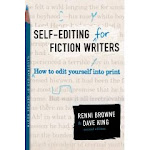A few weeks ago, Sandi asked me, “How do you manage to write so many books? How fast do you usually write them?” She suggested I blog about the process.
For about ten years, I managed to write one Heartsong-length book (45-50,000 words) in a year. If I wrote a longer book, it took me longer to write it. My primary motivator (since I wasn’t selling anything yet, understand) was to have a new chapter to bring to my critique group that met twice a month.
When I sold my first mystery, Gunfight at Grace Gulch, on the basis of a synopsis and three chapters, I had to learn how to write by the editor’s deadline. For the first time, I had to make goals work (see my January 3rd blog on Goals.) I wrote four novels and two novellas (as well as several nonfiction writing assignments) in a two year period before I made the jump to writing full time. Now I have more time to write. . .but praise God, I also have more I need to write, so the process hasn’t changed much.
I already have a detailed (chapter-by-chapter) synopsis before I begin the writing process detailed below.
I write in three drafts. My rough draft is just that: as the words trip from my fingers, no rewriting at all, full of inconsistences, research points, and notes to myself. I turn off the internal editor and simply plow through. That comes in the second draft, when I do major revisions. I research any questions, polish my writing, make sure the characters keep the same names and hair color all the way through, before sending out chapters to my critique partners. After I receive their comments, I do a final run through. Of course, before I send it in I do a final spell check.
Theoretically, each draft takes less time than the one before. In creating goals, I give a value of “1” to first draft, “1.5” to the second draft, and “2” to the final draft. That is, I hope to double my daily word count between the first draft and the final draft. Since I generally lose about 10% of my manuscript during the revision phase, I plan to write my first draft 10% longer than the final manuscript needs to be. (This isn’t true of everyone. You’ll know your own style.)
With all of that in mind, what does it look like with a real book? Let’s look at my next project, my third Vermont book, Love’s Raid, due to the editor on August 1st. I plan to finish the final edits by July 24, to allow for unexpected delays. Since writing full time, I plan on daily goals of 3,000/4,500/6,000 words five days a week (with a smaller amount on Saturdays and none on Sundays). I also let the manuscript sit for about a week between each phase. If I stick to that schedule, I can begin writing Love’s Raid on June 4th and finish on July 24th. I will try to start around June 1st, “just in case:”
June 1st-21st: Rough draft
June 28th-July 3rd: Major revisions
July 12th-24th: Final edits
This schedule allows me to focus on a different manuscript requested (but not contracted) between now and June 1st.
As I’ve focused more on writing, my writing has improved in the first draft. My revisions no longer take as longer. I’m writing faster and cleaner. I have no magic pills to offer to speed the process. Know your own limits, plan accordingly, and you will find yourself doing more with less as you grow.
What does your writing process look like? Have you finished a manuscript? Tell me more.













